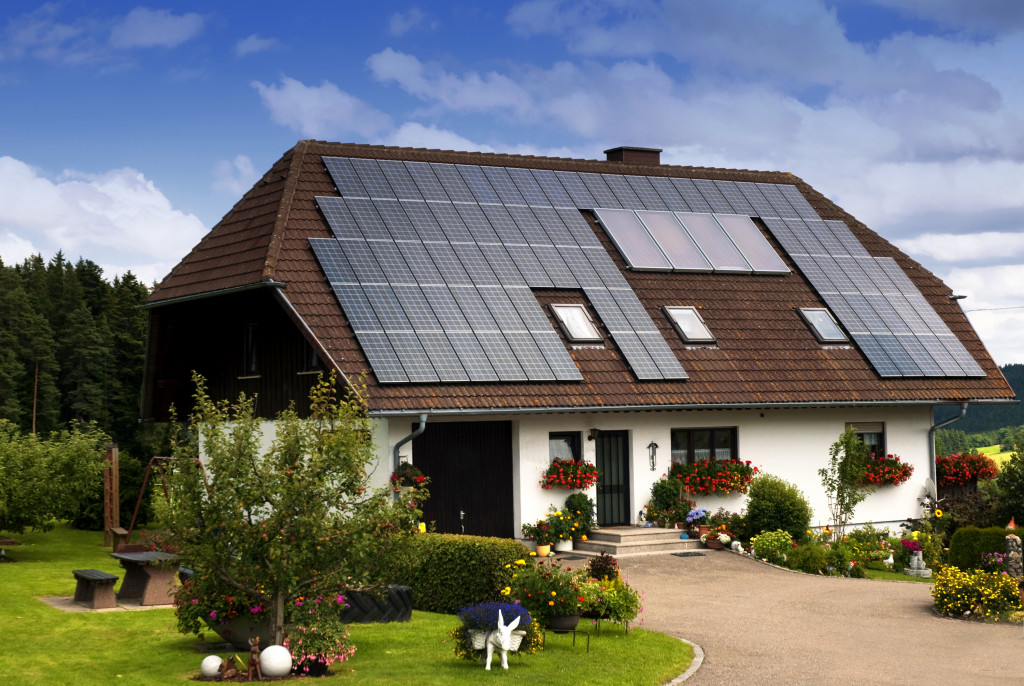More and more, people are becoming interested in living a sustainable lifestyle. One way to do this is by building an eco-friendly home from scratch. It’s not as difficult as it seems, and it has many benefits, such as saving money on energy bills and helping the environment. Here’s a quick guide to help you get started.
Choose a location for your home.
If you’re looking to be entirely off the grid, you’ll want to find a spot away from city noise and light pollution. This will also help you take advantage of natural resources like sunlight and water.
If you’re not interested in living too far away from civilization, then you can still build an eco-friendly home in the city—just be sure to pick a location that gets plenty of natural light. South- or west-facing walls are ideal for solar panels and passive heating.
Regardless of where you build, choose a spot close to public transportation so you can reduce your reliance on cars. Also, try to find a location that’s not in a floodplain—this will help you avoid any damage from future storms.
Start planning the design of your home.
There are many things to consider when making your plans, but some of the most important things to keep in mind are the orientation of your home and the materials you’ll use. Orienting your home in such a way that it takes advantage of natural light will help you cut down on energy costs, while using sustainable materials like bamboo or recycled glass will help reduce your carbon footprint.
In addition, try to incorporate some green space into your design. This can be anything from a small herb garden to a larger vegetable patch. Not only will this give you some fresh air and produce, but it can also help reduce stormwater runoff.
Finally, make sure that your home is designed to be as energy-efficient as possible. This means using materials that are good insulators, like straw bales or cork, and making sure that your windows are double-paned.

Use alternative materials.
Once you have your plans finalized, it’s time to start construction! This is where things can start to get tricky, but luckily there are plenty of resources available to help you build an eco-friendly home.
For example, wood fence alternatives are made out of recycled plastic—this is a great way to reduce your reliance on wood, which is often treated with harmful chemicals. They can also be extremely strong and versatile materials.
In addition, all sorts of alternative building materials are available that can help you insulate your home without using traditional materials like fiberglass or Styrofoam. Some good options include cellulose insulation, sheep’s wool, and denim.
Hire experienced contractors.
One of the most critical steps in building an eco-friendly home is to make sure that you hire experienced contractors who are familiar with sustainable building practices. This will ensure that your home is built correctly and that any problems that do arise can be quickly fixed.
In addition, working with experienced contractors will give you peace of mind knowing that your home is being built by someone who knows what they’re doing.
Finally, don’t be afraid to ask questions! If you’re not sure about something, make sure to ask your contractor for more information. They should be able to provide you with all the answers you need to make sure that your home is eco-friendly and up to your standards.
Use the sun’s energy.
Finally, don’t forget about solar power! Solar panels are a great way to generate electricity without harming the environment. Plus, they can be used to heat water or even power your entire home.
When choosing solar panels, be sure to pick ones that are made from recycled materials. You should also try to find panels that have a high-efficiency rating—this will help you get the most bang for your buck.
Remember that solar panels are just one way to use the sun’s energy—you can also capture solar heat by orienting your home in such a way that it takes advantage of the sun’s rays. This is called passive solar design, which can help you save on heating costs.
Building an eco-friendly home can seem daunting, but with the right resources, it’s doable. By using alternative materials and hiring experienced contractors, you can build a home that is environmentally friendly from start to finish. And don’t forget about solar power—it’s a great way to generate electricity without harming the environment.







